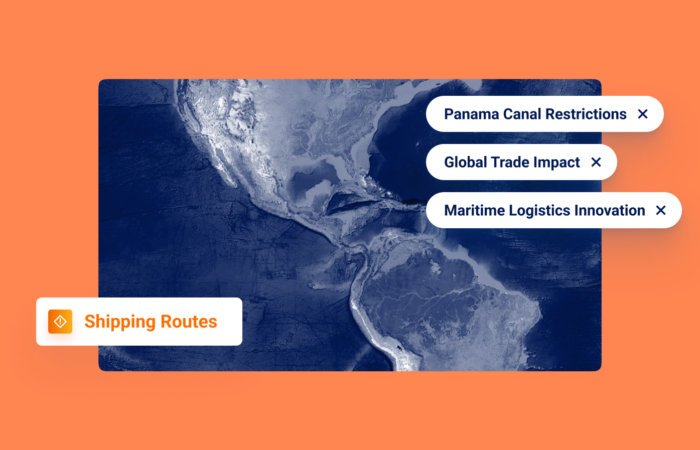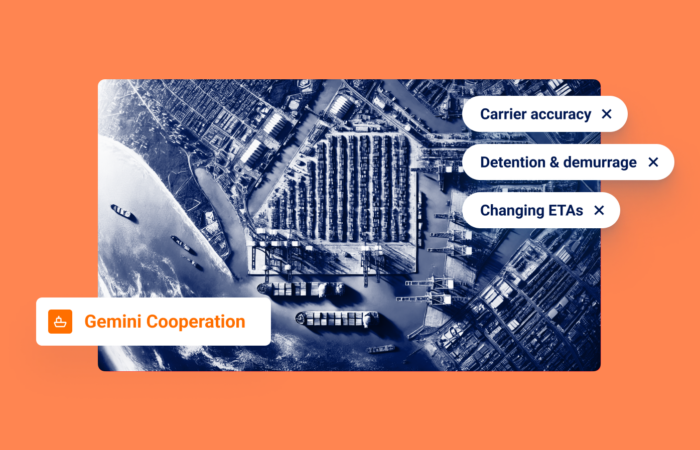Shanghai Coping Amid Peak Congestion: What About Others?

What’s inside?
Our latest Port Insights zooms in on what happened globally in October to give you all the data and analysis you need to make more informed decisions around congestion. The trick is knowing where it’s building up around the world early enough to take action.
Is congestion finally catching up to Asia?
Home to some of the busiest container terminals in the world, the port of Singapore, Tanjong Penjuru, has handled the pressure of the pandemic era quite well. But in October, transit times to the port increased by 8.8%, the biggest increase for this critical transshipment hub since July 2021, bringing congestion to its highest level of the past year.
Busan, the other major transhipment hub in Asia, decreased its congestion by 16% month-over-month and its call duration times by 6%. Both ports now manage the same call duration times for feeder vessels – 0.7 days on average.
The port of Kaohsiung in Taiwan and the port of Mundra in India both experienced increased transit times to their respective locations for consecutive months, bringing both ports to their worst congestion levels of the past two years. In Kaohsiung, this congestion was also felt in call duration times, which increased by 19% month-over-month.
When comparing the main ports in Asia (excluding China) to the rest of the world, it is clear that the pressures of the past two years were either less impactful, or handled better. Could September and October have been signs that this is finally worsening?
Shanghai remains serene?
Shanghai port’s Congestion Inflation graph, which monitors changes in transit times to the port, has remained relatively flat throughout the past 24 months, despite many disruptions.Butin September, transit times increased by 25%, reaching their two-year peak, and remained the same in October.
Conversely, the port saw the largest improvement in average call duration among China’s top ports, decreasing it by 11% month-over-month in October, to 0.8 days. While still one of the busiest container ports globally, this is one of the best times of all ports in this report in October.
The Port of Shanghai seems to be leveraging its advanced automation capabilities to efficiently handle the pressure of dealing with the world’s second highest vessel capacity sailing into its facility last month, at 3.79 million TEU, which remarkably is a 7% increase from September.
Comparatively, Qingdao, China’s third busiest port in October, is also facing its most severe congestion of the past two years, surpassing a 150% increase in transit times compared to September 2020! However, it also experienced an increase in port call duration of 19% month-over-month and a decrease of 12% in TEU capacity sailing into its port.
Congestion is building up again on the U.S. West Coast
Container vessels calling Long Beach (LB) in October berthed for an average of 3.5 days, by far one of the longest average port call durations of all 39 ports covered in this report, second only to Los Angeles (LAX), with an average of 4.1 days. However, for LAX, that’s an 11% improvement. For LB, it’s an increase of 45%. Ultra Large Container Vessels (ULCVs) berthed there for an average of 6.3 days(!), far more than at any other port in this report.
In Oakland, transit times increased by 42% month-over-month, and turnover times increased by 18%, all of which resulted in the port’s inability to handle as many vessels as the previous month, as seen in the 14% drop in TEU capacity sailing into its port.
Looking at the United States’ East Coast, transit times to New York decreased by nearly 14%, while the average call duration decreased by 11% to 1.5 days, allowing it to keep its position as the busiest port in the U.S., with vessels totalling 838k TEU capacity berthing there in October.
Houston slashed its call durations by 28% and transit times to its port by nearly 22%, resulting in an increased ability to handle vessel berths, as 16% more TEU capacity sailed into its facility. The port of Savannah achieved a similar feat.
Felixstowe hits a high, Le Havre’s hits a low
The United Kingdom’s largest container port of Felixstowe continued to experience increased congestion as expected, following another eight-day strike that ended in early October. Transit times to the port started worsening as early as July, before the first strike in August 2022. October was the fourth consecutive month in which transit times to Felixstowe increased, reaching a two-year record. The 24% increase in TEU capacity in October vs. September could be a result of the latter being a slow month, with carriers reacting to the strike announcement.
In Germany, transit times to Hamburg decreased for the second consecutive month. However, despite a 4% decrease in October, the average port call duration was still the longest of all major European ports at 1.8 days overall, and 3.3 days for Ultra Large Container Vessels (ULCV).
If shipping to Germany, it seems you may be better off using Bremen, whose 24-month congestion inflation graph is flatter than Hamburg’s, and where the overall average port call duration is half that of its German alternative. Meanwhile, transit times to Le Havre reached a 9-month low, following a nearly 13% month-on-month improvement.
Windward believes data and analysis can provide enormous value to entities throughout the supply chain ecosystem.












